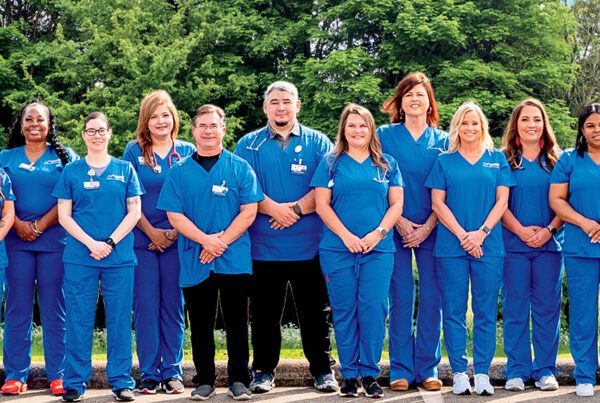Hospice Myths
Provided by Altus Hospice Care
The truth is: We enrich life in surprising ways. Here are some things you may not know about Altus Hospice care.
Myth: “I thought that if my mother was under the care of hospice, she could no longer go to the hospital if she needed to. In the past year, she has been hospitalized several times because her pain got out of control.”
Truth: While hospice strives to manage pain and other uncomfortable symptoms outside of the hospital setting, a hospice patient always has the choice of whether or not to go to the hospital. The Medicare Hospice Benefit covers short-term general inpatient care in the hospital when a patient’s symptoms can no longer be managed in another care setting.
Myth: “I always thought that ‘hospice’ was a place – that building that I passed on the way home from work.”
Truth: Hospice is a philosophy of care, not a place. Hospice care can be provided in any place the patient calls home, whether that is a personal home, a skilled nursing center, assisted living facility or anywhere else.
Myth: “I didn’t know that hospice care could help take care of my dad in his assisted living apartment. He could have really benefited from the support from the hospice caregiving team.”
Truth: Hospice provides care wherever a patient calls home, including, but not limited to assisted living facilities, skilled nursing facilities, independent living facilities and personal homes.
Myth: “The doctor said I had to sign a Do Not Resuscitate (DNR) order for my wife in order for her to get hospice. I just couldn’t do that; it seemed so final.”
Truth: A patient can receive hospice without having signed a DNR. The hospice regulation actually says that hospices cannot discriminate against patients because of any advance directive choices.
Myth: “I didn’t consider hospice care early enough because dad was still getting blood transfusions regularly. We weren’t ready to stop because each time he would get one, it seemed to make him feel better for a few days. We just wanted him to feel like himself for as long as possible.”
Truth: The Medicare Hospice Benefit may cover chemotherapy, radiation, blood transfusions or other treatments if those treatments are providing comfort for patients eligible to receive the benefit (life expectancy of six months or less if the illness runs its normal course).
Myth: “I thought that hospice was only for patients with cancer. I didn’t realize that my husband who suffered from Alzheimer’s disease could have benefited from support from the hospice caregiving team too.”
Truth: More than 60% of hospice patients nationwide have diagnoses other than cancer. Many patients have other diagnoses or advanced stages of chronic diseases like pulmonary disease, Alzheimer’s disease, renal disease, HIV/AIDS and cardiovascular or neuromuscular diseases.
Myth: “I was under the impression that I had to be available as the designated caregiver 24 hours a day in order for my mom to get hospice.”
Truth: While some hospices require caregivers prior to the patient being admitted, Altus does not. We help coordinate community resources to keep the patient at home as long as possible, and then help the patient find an alternative location to receive care when care at home is no longer possible.
Myth: “My dad lives at home. We weren’t considering hospice for dad because we thought it was too expensive. Between the doctor’s visits and the cost of medications today, we have to save everything we can to make sure we can care for his ongoing needs.”
Truth: The Medicare and Medicaid Hospice Benefits cover services at 100%, so there is no cost to the patient. If patients have private insurance or managed care, Altus assists in checking their benefit coverage to make sure patients and families understand the potential out-of-pocket costs.
Myth: “I wanted to learn more about hospice, but thought I had to wait for the doctor to bring it up first, so he could order it for my brother.”
Truth: Patients can choose for us to meet with them and discuss the benefit of hospice at any time. We cannot provide hands-on care to a patient without a physician’s order. We work with each patient’s physician to identify each patient’s individual needs.
Myth: “I was so scared to even say ‘hospice.’ I thought it meant I had to give up hope, give up trying and give up praying for a cure.”
Truth: In order to receive hospice, the patient must be eligible and have an understanding that hospice focuses on comfort care (palliative), not a cure. But patients and families do not have to be “ready to die” before getting the care they need and deserve. Hospice helps patients and families deal with what is happening to them on their own terms and in their own time frame. It is important to get hospice early so that the benefit can help patients prepare and get ready for what is happening. It is not required that patients be ready prior to receiving care.
Myth: “Hospice is not palliative care.”
Truth: All hospice services are palliative in nature, however, not all palliative care is delivered under the Medicare hospice benefit. Hospice focuses on physical, spiritual and emotional support to the patient and family including family counseling, help with end-of-life decisions and bereavement services.







Recent Comments